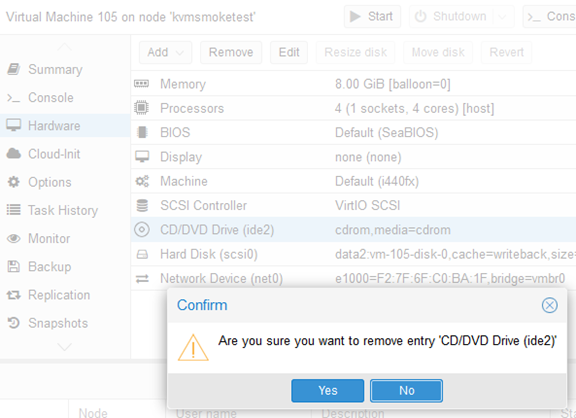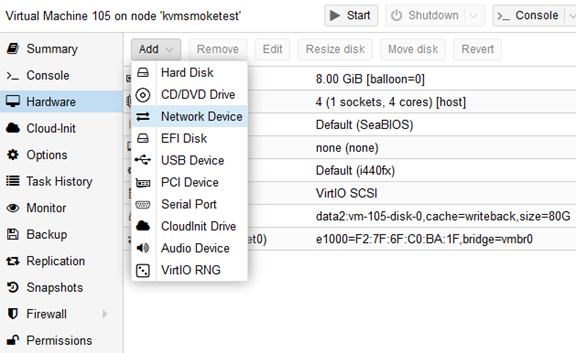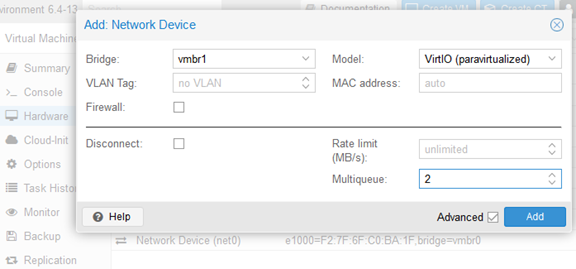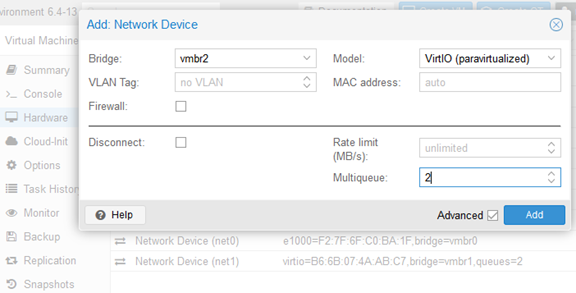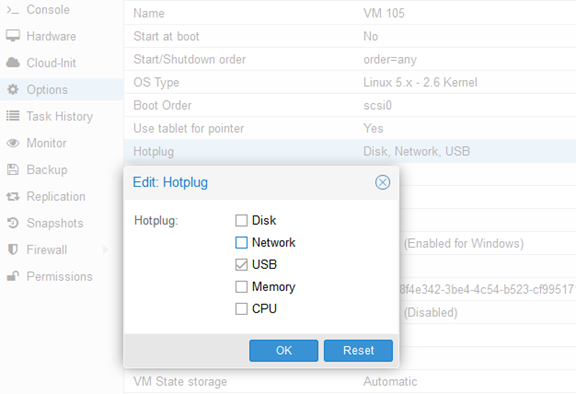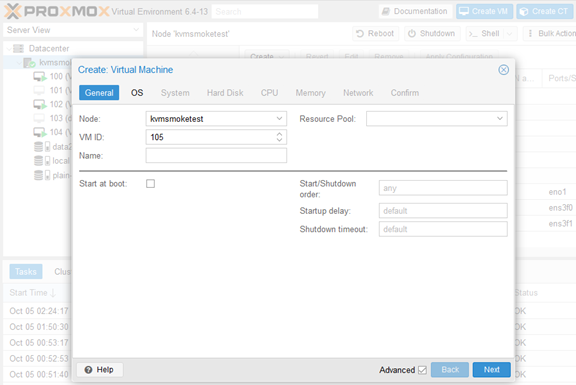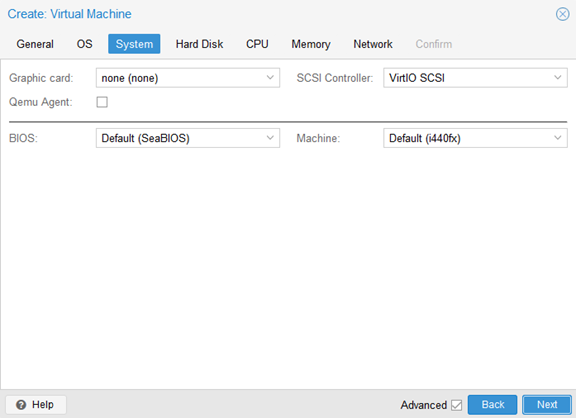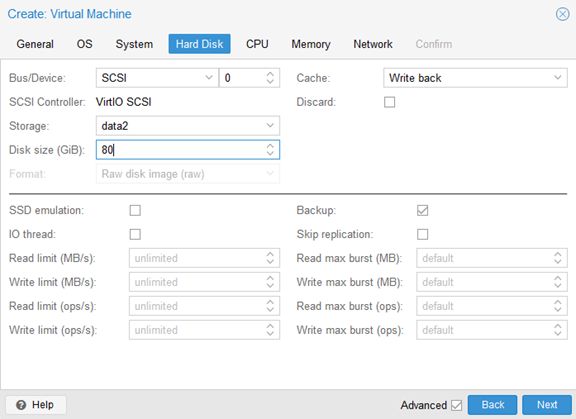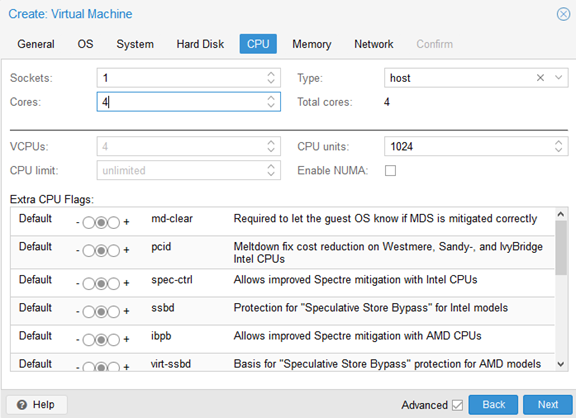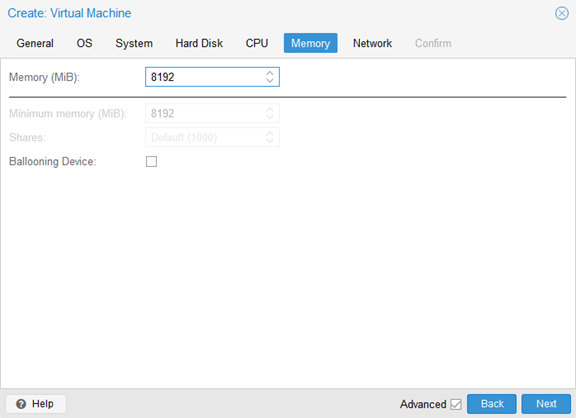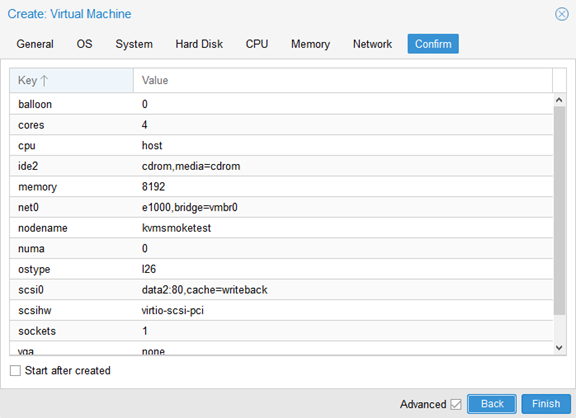The virtual machine configuration file is located under /etc/pve/nodes/<KVM_hostname>/qemu-server/<VM_ID>.conf,
where KVM_hostname is the name of the server and VM_ID is
the virtual machine ID number configured in Step 4.
Edit the VM configuration file to add the following two lines to add
serial port and watchdog
functionality:
args: -chardev socket,id=serial0,port=<console_port_number>,host=0.0.0.0,server,nowait,telnet -device isa-serial,chardev=serial0
watchdog: i6300esb
The serial port is added and configured for network access on a network
port specified in the <console_port_number>.
VE6120K Small Proxmox VM configuration file (e.g.
<VM_ID>.conf)
sample:
# cat /etc/pve/nodes/KVMSERVER/qemu-server/102.conf
args: -chardev socket,id=serial0,port=56028,host=0.0.0.0,server,nowait,telnet -device isa-serial,chardev=serial0
balloon: 0
boot: order=scsi0
cores: 4
cpu: host
hotplug: usb
memory: 8192
name: VE6120K
net0: e1000=BA:44:BE:F7:AA:08,bridge=vmbr0
net1: virtio=E2:55:A7:86:0D:FF,bridge=vmbr1,queues=2
net2: virtio=52:AA:44:EB:DC:A0,bridge=vmbr2,queues=2
numa: 0
ostype: l26
scsi0: plain-storage:102/vm-102-disk-0.raw,cache=writeback,size=80G,ssd=1
scsihw: virtio-scsi-pci
smbios1: uuid=7a25ec0b-0d9f-4fde-9fe4-821afa5f396f
sockets: 1
vga: none
vmgenid: 8013433b-e9ed-4249-9604-2c5ebf0a4b74
vmstatestorage: data2
watchdog: i6300esb
VE6125K XLarge Proxmox VM configuration file
sample:
# cat /etc/pve/nodes/KVMSERVER/qemu-server/100.conf
args: -chardev socket,id=serial0,port=56030,host=0.0.0.0,server,nowait,telnet -device isa-serial,chardev=serial0
balloon: 0
boot: order=scsi0
cores: 20
cpu: host
hotplug: usb
memory: 32768
name: VE6125K
net0: e1000=4E:FD:02:4C:C5:19,bridge=vmbr0
net1: virtio=2A:39:7A:E0:8E:92,bridge=vmbr1,queues=4
net2: virtio=56:5D:4A:16:63:AF,bridge=vmbr2,queues=4
numa: 0
ostype: l26
scsi0: data2:vm-100-disk-0,cache=writeback,size=250G,ssd=1
scsihw: virtio-scsi-pci
smbios1: uuid=07cd719c-fc03-4d3d-ae36-4a612ebf21cf
sockets: 1
vga: none
vmgenid: 42f181ea-8ffe-4d9b-ac0b-1f45ddb07698
vmstatestorage: data2
watchdog: i6300esb

